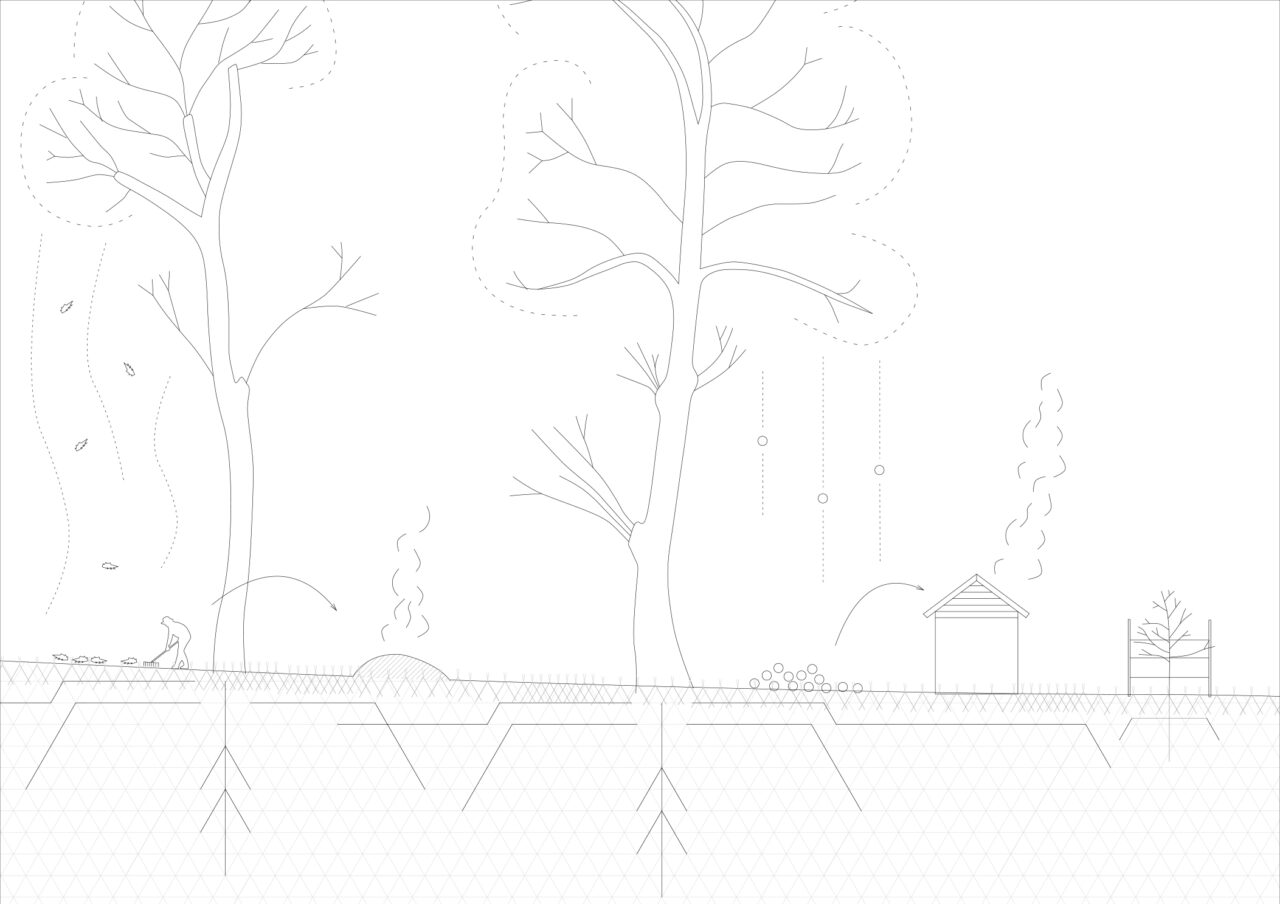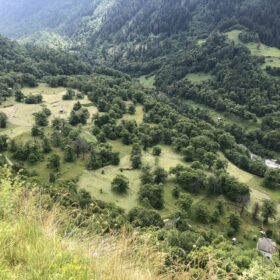
The landscapes dominated by chestnut trees in the southern alpine valleys are among the traditional agroforestry systems of Switzerland and have long been the main source of food for the local population. These complex socio-ecological systems provide a great learning space for landscape architects and planners, as chestnut orchards are an excellent example of a productive, yet wonderfully beautiful, landscape between forest, agriculture, and recreation area.
Every autumn a fragrant smoke envelops the lower Bergell in a haze. The smoke comes from small houses, called cascine, and penetrates through the loose beams and stone slabs of the roofs. The cascine are drying houses, and in them the small chestnuts are dried to preserve them. The large ones go on sale and are eaten fresh. Twice every day during the drying period, a fire is rekindled in the lower floor, which never has flames, but always smokes. Every morning and every evening at first small chestnut wood is lit and then a big piece of chestnut wood is put on top. At the end, the whole thing is covered with a shovel of shells of chestnut fruits from the previous year. On the upper floor, on a wooden grate whose slats are so close together that the smoke from below gets through, but the chestnuts do not fall, the chestnuts lie in a layer of 40 cm. This corresponds to almost a ton and a harvest of about 20 trees. After four weeks, the layer of chestnuts is turned upside down and after six weeks, the fruits are dried and preserved. The dried chestnuts are then processed into flour, flakes, pasta, gnocchi, cakes, and crème or cooked as a whole piece with bacon.
A Productive Agroforestry System
Chestnuts were the daily bread, the «bread of the poor», and there were times of crisis when the poor valley population ate almost exclusively chestnuts. To protect themselves from hunger, people depended on one chestnut tree per capita, equivalent to about 50 kilograms of fruit. In harsher times, however, people ate up to 150 kilograms of chestnuts per year – almost half a kilogram a day. This weariness has been one of the many reasons why the landscape of the chestnut orchards has declined in size and importance in the last decades – for comparison, today the yearly average consumption of chestnuts in Switzerland is 1 kg per person. For the local population, especially for the elderly, chestnuts have a bitter-sweet taste. During the Second World War, people in Castasegna ate almost only chestnuts. They were up to their necks and after that no one felt like taking care of the trees because it is very labour intensive.

Along with the forest pastures in the Jura («Wytweiden») and the high-trunk orchards of eastern and central Switzerland («Hochstammobstgärten»), the chestnut orchards are one of the three traditional agroforestry systems in Switzerland – and clearly the most important productive food system for the population in the southern Alpine valleys. In an agroforestry system, animal or arable agriculture is combined with trees. In addition to fruits, the chestnut orchards consequently produce milk, cheese, meat, and honey. In spring and autumn, goats and sheep graze under the trees, which in the past traditionally rotated first to the Maiensäss in summer and then to the alpine pastures. This way, chestnut trees on the lean and acidic side slopes provide two to three times more calories per cultivated unit than cereal crops.
Stefan Breit is environmental scientist, lecturer, and researcher at the Chair of Being Alive at ETH Zurich. In June 2023, he spent two weeks at the Studio Cascine in Castasegna, Bregaglia, to research the agroforestry system of chestnut orchards for the course «Regenerative Practices for Exhausted Landscapes». The studio of the Fondazione Garbald is a converted drying hut for chestnuts and offers space for research and work residencies – this article is a summary of the conversations he had with local experts on the topic of food during that time. The author thanks them for generously sharing their knowledge.